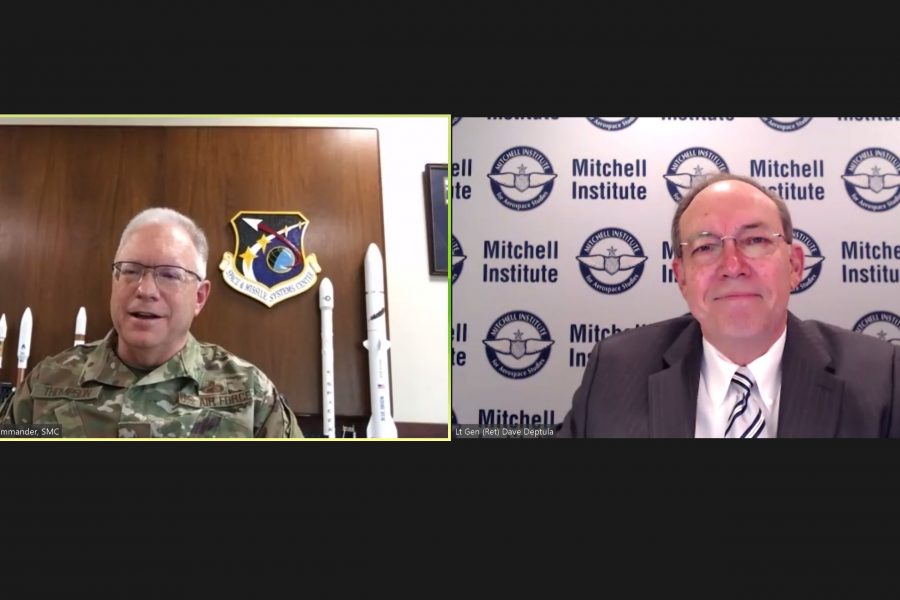The COVID-19 pandemic and related restrictions have moved much of the Space and Missile Systems Center’s work online, but the Space Force still met major milestones on new systems virtually.
In recent weeks, the GPS III Follow-on finished its critical design review campaign virtually and on schedule, SMC boss Lt. Gen. J.T. Thompson said. Additionally, the Weather System Follow-On Microwave finished its CDR process in April, receiving Milestone B approval in mid-May in the height of the pandemic.
“I think that’s remarkable, in that old hands like myself … know the face-to-face interpersonal contact required to close out a critical design review on a major weapon system and to do that virtually is really remarkable,” Thompson said during a June 17 Mitchell Institute for Aerospace Studies virtual event.
SMC conducted the critical design review of GPS IIIF as it prepares for the launch of the GPS III space vehicle three satellite, which was originally scheduled for late April but has been pushed back to June 30 due to the new coronavirus. That date is still holding, Thompson said.
“We did that because we wanted to protect the mission,” he said. “And we wanted to protect the people associated with that mission. The folks who had to execute it, in both the launch part of the business and the early orbit checkout, we had to make sure that the facilities, and the processes, and procedures in place were COVID-19 compliant. We made that happen, and so that launch is back on track.”
GPS III SV03 will launch on a SpaceX Falcon 9, and follows the second GPS III launch, which took place in August 2019 on a United Launch Alliance Delta IV. Lockheed Martin is on contract to build 10 of the systems, with the fourth also expected to launch this summer. In addition, the company has received a $7.2 billion contract to build up to 22 of the GPS III Follow-on systems, with launch expected in 2026.
The Weather System Follow-on Microwave program is set to replace the Defense Meteorological Satellite Program to provide weather data, including ocean surface wind speed and direction, ice thickness, snow depth, and other data for both U.S. and allied militaries and civilian weather organizations.
The SMC, along with Department of the Air Force and Defense Department officials, are tracking the impact of COVID-19 on industry, especially on non-traditional defense contractors focused on small satellites. While Thompson couldn’t provide details, he said in the near future the Pentagon will award contracts to these companies under the Defense Production Act “to keep that industry going.”
